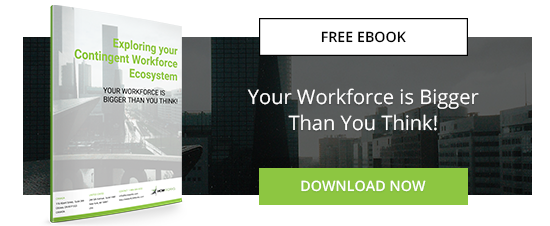The business world is seeing a shift from the typical nine-to-five, permanent workforce to a higher dependency on contingent labor. Contingent labor consists of statement-of-work laborers, temps, independent contractors, and freelancers.
When it comes to talent recruitment, businesses are now looking to employ workers quickly and temporarily, on an as-needed basis, instead of investing in hiring new employees. And the trend is only expected to grow, with more than half of US companies anticipating an increase in the use of contingent labor to meet their future talent needs in 2015. By 2016, the industry is set to reach a record size of $121 billion.
Here are a few of the reasons why businesses are increasing their dependency on contingent labor.
Flexibility
One of the driving forces behind the dependency on contingent labor is the added flexibility that it allows for. During the Great Recession, companies were forced to lay off employees due to plummeting revenues, which is a difficult situation to say the least.
When the economy started to straighten out a bit, companies were able to take on larger workforces again. But to avoid having to face layoffs if such a similar situation arose, they chose to instead hire temporary labor.
With contingent workers, companies have no financial commitment to keep paying them if they are no longer needed, and they do not have to provide severance pay, either. Though they are still hiring permanent employees when warranted, to protect themselves in the future, companies have become more judicious when adding on permanent workers.
Lowered Costs
Hiring permanent employees is expensive. A salary must be paid even if times are slow. Vacation days, sick days, and holidays must be paid. And health coverage and other benefits might also be offered. All of these expenses could go into the thousands and far outweigh the per-project fee you would be paying an independent contractor to do the work. And once the work is done, the contractor leaves. There are no added costs and no long-term commitment to pay.
Specialized Skills
When there is a skills gap in a company, it can be difficult to get certain projects completed. You do not want an unskilled, inexperienced employee doing the job that should be done by a professional. But if it isn’t an ongoing project, you certainly do not want to hire a permanent employee to handle it.
With contingent labor, companies can find workers with the specialized skills that they need for any given project, without a long-term commitment. As such, productivity rises, while the temporary cost is more palatable to the bottom line.
Risks of Using a Contingent Workforce
As advantageous as it is to use a contingent workforce, doing so does come with risks that companies must be aware of and effectively mitigate.
In order to manage contingent labor, more complex management tactics and technology will be needed. With the right technology, companies will be able to keep track of compliance issues, payroll, and performance in order to streamline processes, maximize productivity, reduce liabilities, and forecast future challenges and opportunities.
Additionally, using contingent workers also requires businesses to consider the possibility of legal and tax penalties if contingent workers are misclassified. If a contractor is in fact considered an employee under the law, a company can be forced to pay back taxes, fines, and penalties to the government and the scorned worker might file a lawsuit to receive unpaid overtime, reimbursement of expenses, holiday pay, and other monies in settlements. These costs could be significant—to the point that they sink your company.
To mitigate these risks, leading companies are engaging managed services providers that provide state-of-the-art management software and provide ongoing consultation services to ensure that they are optimizing their workforce and complying with state and federal laws.




